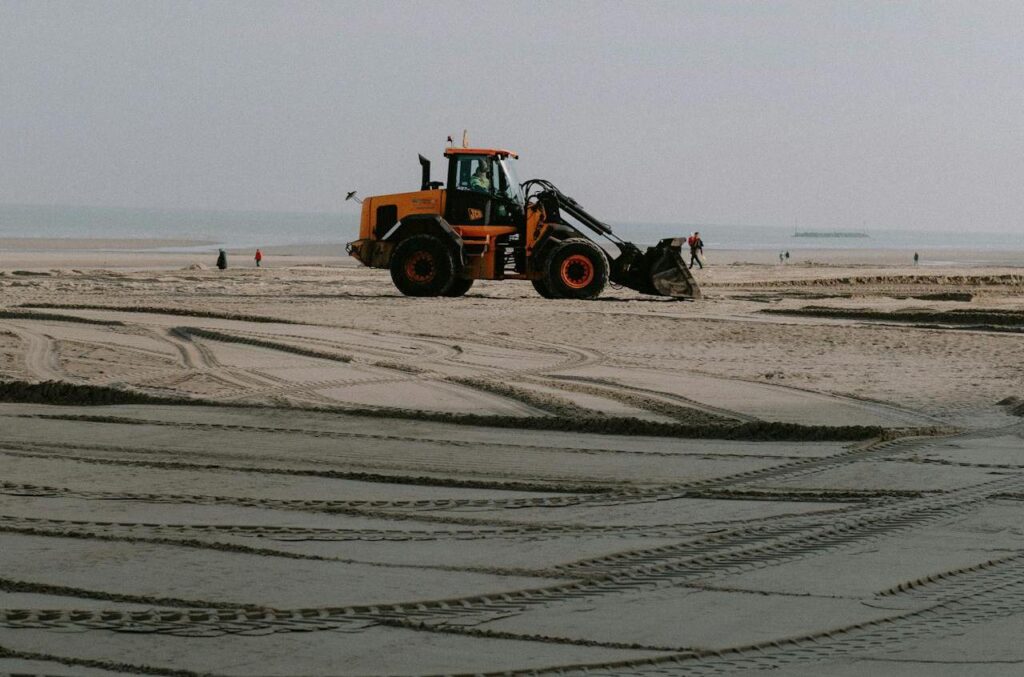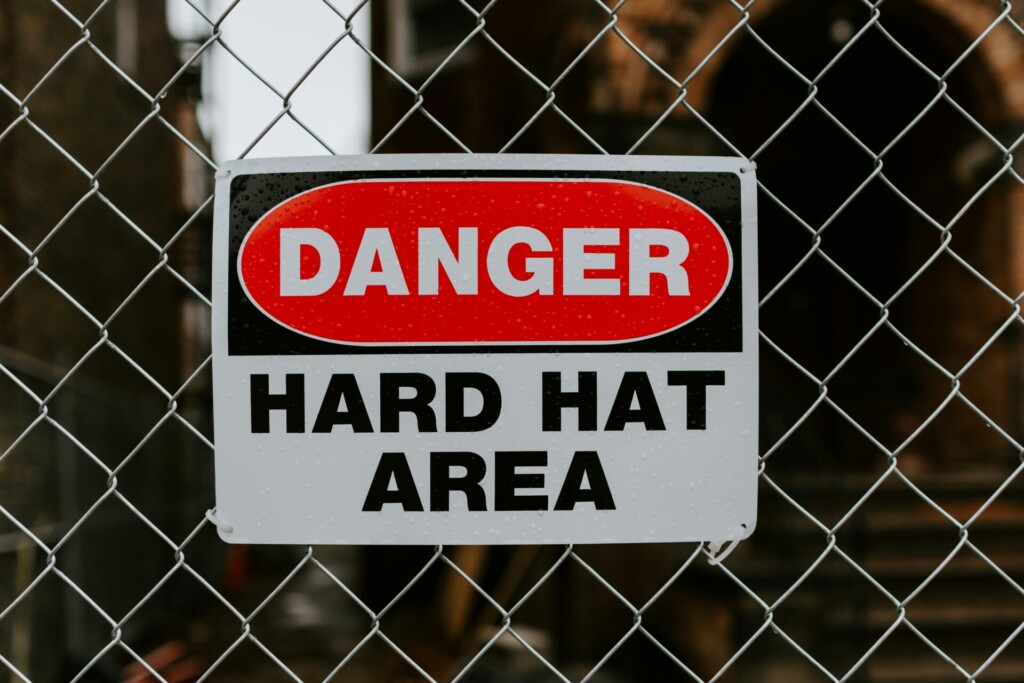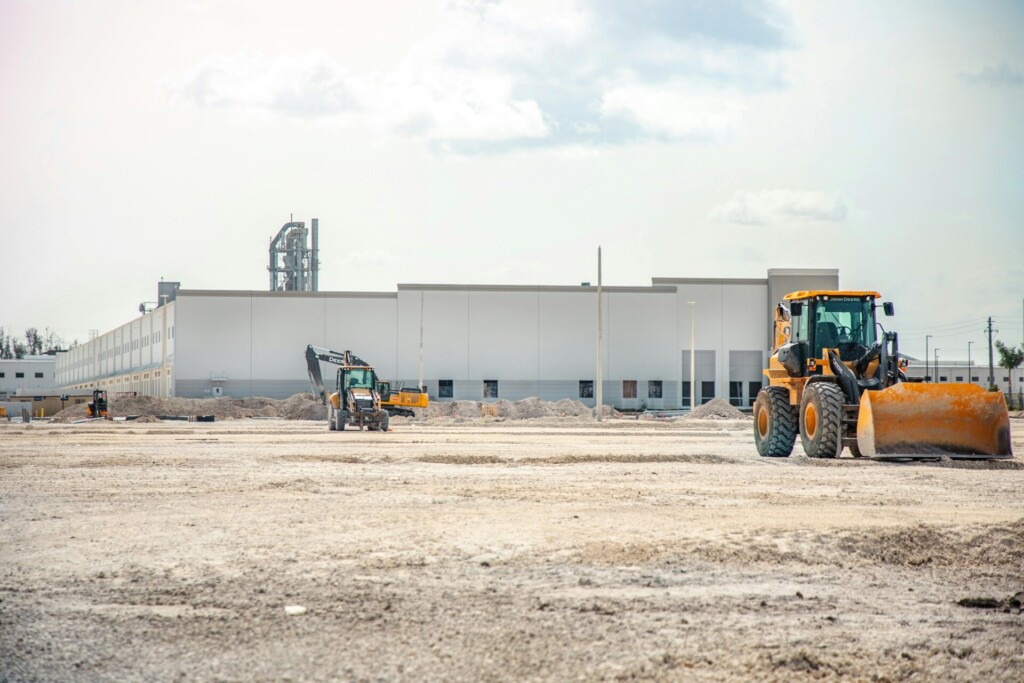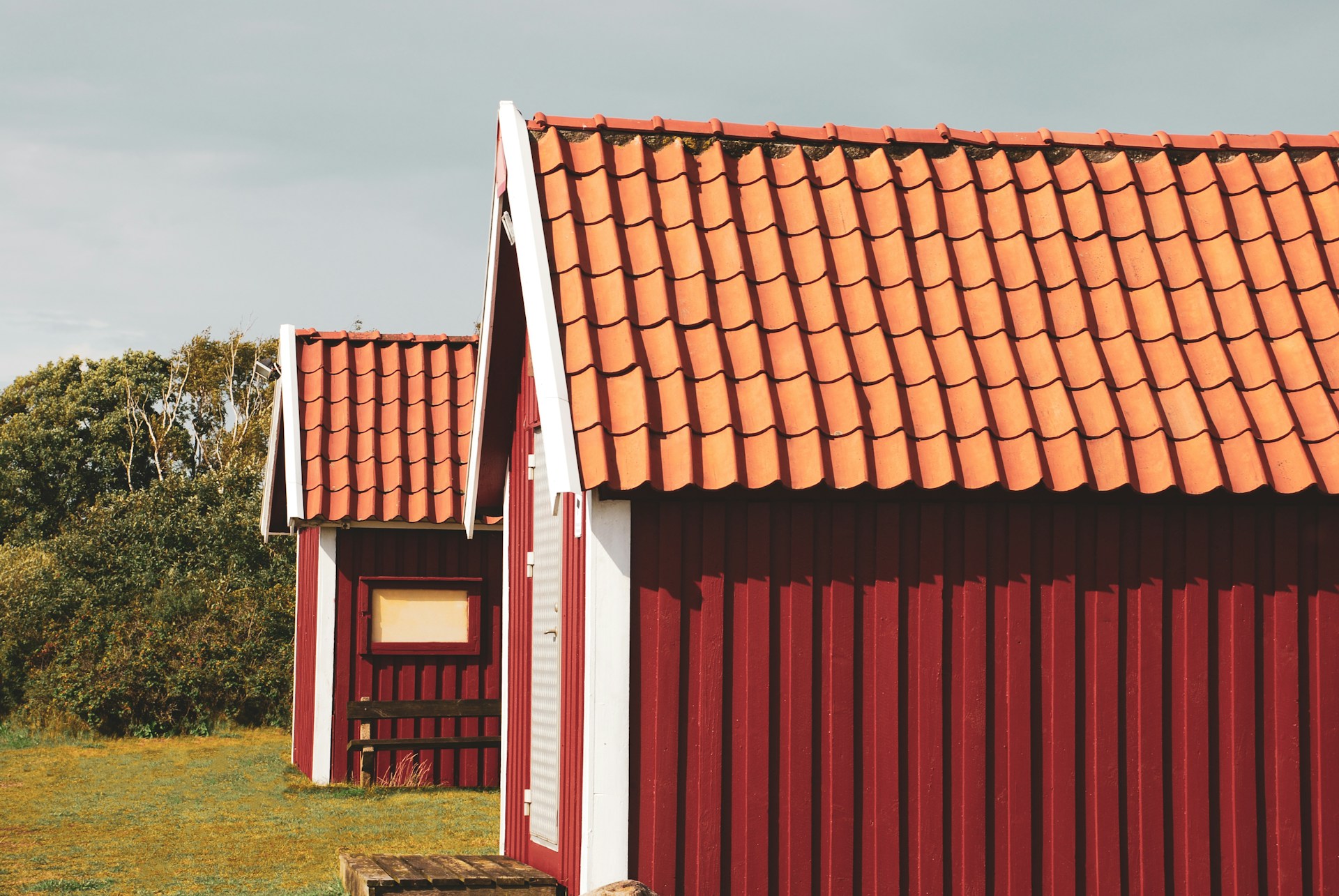Poor construction site design costs contractors an average of 10-15% of project budgets through wasted time and material handling inefficiencies. What starts as a simple oversight in planning becomes weeks of lost productivity, frustrated crews, and budget overruns that could have been prevented from day one.
Construction site design involves the strategic planning and organization of temporary facilities, utilities, access routes, and work areas to deliver projects safely and efficiently. We create detailed layouts that map property boundaries, existing topography, utility connections, and construction limits while ensuring compliance with local codes and seamless integration with surrounding infrastructure.
Which Elements Must Every Construction Site Design Include?

We organize construction sites around four core areas that ensure safety, efficiency, and compliance. Each element serves specific operational needs while supporting the overall project delivery.
Safety Infrastructure And Emergency Systems
We place first aid stations at central locations with clear access routes for emergency responders. Fire prevention equipment includes extinguishers positioned near high-risk areas and combustible storage zones. Emergency exits require marked pathways that remain unobstructed throughout construction phases.
Assembly points need designation in open areas away from potential falling debris or structural collapse zones. We display street addresses prominently at main entrances to guide emergency vehicles quickly to the site. Fire lanes must maintain minimum widths and stay clear of parked equipment or material staging.
Site Access And Traffic Management
Internal roads connect all work areas while accommodating the largest delivery vehicles expected on site. We design entry and exit points to prevent bottlenecks during shift changes and material deliveries. Parking areas require sizing based on peak workforce numbers plus visitor and vendor vehicles.
Traffic regulatory signs direct vehicle movement and identify restricted zones. Loading and unloading areas need positioning near material storage but away from active work zones. Clear sight lines at intersections prevent collisions between vehicles and pedestrians.
Security And Site Control
Perimeter fencing establishes site boundaries and controls unauthorized access. A guard house or security checkpoint monitors entry points during active hours. Lighting systems illuminate pathways, storage areas, and work zones for extended operations and security purposes.
We secure tool and equipment storage in designated areas with appropriate protection from weather and theft. Material staging requires organized layouts that support inventory tracking and prevent unauthorized removal.
Essential Support Facilities
Office trailers house project management teams and provide meeting spaces for coordination activities. We position these near main access points but away from heavy construction noise. Water supply connections serve both construction activities and welfare facilities like restrooms and wash stations.
Sanitation facilities include portable toilets distributed based on workforce size, typically one unit per twenty workers. Craft change-houses provide secure storage for personal items and changing areas when projects require specialized work clothing.
Production And Storage Elements
Material handling areas accommodate deliveries while maintaining clear access to active work zones. We designate laydown areas for prefabricated components, structural steel, and bulk materials based on construction sequence needs. Warehouses protect weather-sensitive materials and provide secure storage for valuable items.
On larger projects, we evaluate whether on-site production facilities like batch plants or fabrication shops improve efficiency compared to off-site sourcing. These facilities require dedicated utility connections, waste management systems, and compliance with local environmental regulations.
Site Boundaries And Legal Requirements
Construction site plans document property lines, setbacks from adjacent structures, and easement locations that affect building placement. We map existing and proposed conditions including driveways, sidewalks, and landscaped areas that require protection or removal.
Construction limits define work zones and establish buffer areas around active operations. These boundaries help coordinate with neighboring properties and ensure compliance with OSHA safety standards for public protection. Staging areas within these limits support material flow while maintaining safe distances from excavation and vertical construction activities.
How Do You Identify, Size, And Place Temporary Facilities?
We identify temporary facilities by examining five key factors that drive our construction approach. Project type determines basic needs: industrial plants require more fabrication shops and storage than highway work. Contract structure affects consolidation opportunities. Turn-key arrangements let us combine administrative functions into fewer, larger facilities. Smaller projects can operate from portable structures, while long-duration builds need more permanent installations.
Project location shapes facility requirements significantly. Remote sites demand dormitories, canteen services, and on-site maintenance capabilities. Projects near urban areas can rely on local labor, reducing accommodation needs. We categorize workforce by travel distance: local workers within 5 km need minimal support, those commuting 5-60 km require transportation coordination, and remote workers beyond 60 km need full lodging facilities.
Common Facility Categories
Standard temporary facilities fall into distinct categories based on function. Administrative facilities include job offices, first aid stations, and guard houses for site control. Worker welfare covers toilets, change rooms, and canteen areas. Production support encompasses equipment maintenance shops, laydown areas, and material staging zones.
Specialized facilities serve specific project needs. Batch plants become cost-effective when concrete volumes justify on-site production over ready-mix delivery. Fabrication shops handle rebar work, carpentry, and welding when schedules or site access make off-site preparation impractical. Testing laboratories support quality control for projects requiring frequent material verification.
Sizing Based On Project Demands
We size facilities using workforce projections, production rates, and schedule constraints. Toilet requirements follow clear ratios: one portable unit per 20 workers minimum. Office space varies by role, with project managers needing 12-25 square meters and engineers requiring 9-11 square meters each.
Material storage calculations involve more complex factors. We estimate storage area using a formula that considers daily material needs, average stock duration, fluctuation factors, and utilization rates. For concrete materials, cement requires 30 days average stock with 1.5-1.8 tons per square meter storage density. Reinforcing bars need 45 days stock at 1.7-2.6 tons per square meter, accounting for handling space and access requirements.
Equipment maintenance shops scale with the machinery fleet size and repair frequency. Warehouses typically require 2.8 square meters per million dollars of project value, while laydown areas need approximately 28.9 square meters per million dollars to accommodate material flow and staging.
Strategic Placement Principles
We place facilities to minimize material handling and worker travel time. Concrete mixers stay close to hoists and delivery points. Material storage areas position near points of use while maintaining clear sight lines for inventory oversight. We avoid placing stockpiles over planned drainage lines or foundation work areas to prevent double handling.
Site entrances receive special attention for width and access angles. Narrow gates create bottlenecks during material deliveries and shift changes. We construct critical utilities like sewers early in the sequence, freeing ground space for other facilities. Temporary roads follow direct routes with adequate width for two-way traffic and equipment maneuvering.
Welfare facilities balance accessibility with operational efficiency. Workers need reasonable walking distances to toilets and break areas without crossing active work zones. We centralize hoists when building layouts permit, reducing the number of material handling points and simplifying logistics coordination.
Which Planning And Compliance Steps Prevent Risk And Delays?

Proper planning and compliance measures form the backbone of risk management for any construction project. We approach these controls systematically, knowing that each element serves a specific purpose in protecting the project timeline and budget.
Safety And Emergency Planning
Safety planning starts with clear, visible markers for emergency systems. We mark first aid stations, emergency exits, and fire lanes prominently throughout the site. Assembly points must be clearly designated and positioned away from potential hazards.
Emergency vehicle access requires careful consideration. Fire trucks need adequate turning radii and clearances, while ambulances require direct routes to potential incident locations. We display the street address clearly at the main entrance to guide emergency responders quickly to the correct site.
Storage safety clearances demand strict adherence to fire codes. We maintain required distances around combustible material piles and ensure proper ventilation in buildings under construction. Fire extinguishers are positioned according to code requirements, with clear access paths marked and maintained.
Legal Compliance And Permitting
Zoning verification prevents costly mid-project corrections. We confirm that planned construction aligns with local zoning ordinances before finalizing the site layout. This includes checking height restrictions, setback requirements, and land use classifications.
Property boundaries must be surveyed and marked accurately. We verify property lines, setbacks, and easements with current legal documentation. Any discrepancies between design drawings and actual boundaries get resolved before construction begins.
Permit compliance requires ongoing attention throughout the project. Building permits specify approved layouts and uses, while environmental permits may restrict certain activities to specific timeframes or conditions.
Environmental Controls
Erosion control measures protect both the site and surrounding properties. We implement sediment barriers, temporary drainage channels, and stabilized construction entrances based on soil conditions and local weather patterns.
Stormwater management systems must be installed early in the construction sequence. These include temporary detention ponds, inlet protection devices, and covered material storage areas. We coordinate with local authorities on discharge requirements and monitoring protocols.
Protection of sensitive areas requires careful planning around wetlands, steep slopes, or protected vegetation. Buffer zones are established and clearly marked to prevent accidental disturbance during construction activities.
Scheduling And Coordination
Phase scheduling ensures that compliance measures align with construction progress. We develop detailed timelines showing when permits expire, when inspections are required, and when environmental controls must be modified or removed.
Material delivery milestones are coordinated with permit requirements and site capacity. Heavy deliveries may require traffic control permits, while hazardous materials need special handling and storage compliance measures.
Utility connections require advance coordination with service providers and regulatory agencies. We map existing utility locations, plan protection measures during excavation, and schedule connections to minimize service disruptions to adjacent properties.
How Do Access, Workflow, And Traffic Shape An Efficient Site?
We design circulation systems that cut unnecessary movement and speed material flow. The right access strategy shapes how fast we complete work phases and how safely teams move around the site. Smart traffic design means fewer delays, less congestion, and smoother operations from start to finish.
Strategic Circulation Planning
We create internal roads that connect directly to work zones without sharp turns or narrow passages. Wide paths prevent equipment bottlenecks and allow two-way traffic during peak delivery times. Direct routes reduce fuel costs and equipment wear while keeping materials moving toward active work areas.
Aerial images help us understand existing terrain and spot potential access challenges before we break ground. We study surrounding infrastructure to identify the best entry points and avoid conflicts with utilities or neighboring properties. Topography guides our decisions on where to place ramps, level staging areas, and equipment paths.
Designated Loading And Material Management
Loading zones get positioned near main access points to minimize truck travel on site. We size these areas based on expected delivery schedules and the largest vehicles that will service the project. Clear truck routes prevent conflicts with pedestrian areas and active work zones.
Parking areas receive careful placement to avoid interference with construction activities. We separate visitor parking from worker parking and position both away from heavy equipment routes. Adequate parking prevents street congestion and keeps the project in good standing with local authorities.
Functional Zone Organization
We divide sites into functional zones that prevent different activities from interfering with each other. Work zones get priority access, while staging areas support them with materials and equipment. Storage zones locate near points of use to cut handling time and reduce damage risk.
Welfare areas receive placement that workers can reach quickly without crossing active construction zones. We position these facilities where they serve multiple work areas efficiently while maintaining safety clearances. Clean separation between zones reduces accidents and improves workflow.
Laydown areas get planned to limit rehandling of materials and equipment. We stage materials in sequence with the construction schedule, placing items needed first in the most accessible locations. Regular site cleaning maintains clear pathways and prevents debris from blocking access routes.
Conclusion And Next Steps For Construction Site Design

Strong construction site design builds project success from the ground up. We start with a complete site plan that maps property boundaries, utility connections, topography, and construction constraints. This foundation guides every decision about facility placement, access routes, and workflow patterns.
The design process follows a logical sequence. We define functional zones for work areas, staging, storage, and welfare facilities. We size and position temporary facilities based on workforce requirements, material volumes, and construction schedules. Safety and environmental controls get established early, from fire lanes and assembly points to erosion measures and utility protection.
Testing the design against the actual construction sequence reveals potential bottlenecks before they cost time and money. We verify that traffic circulation supports material flow and equipment movement. Staging areas align with build phases. Storage locations minimize double handling. Access points accommodate deliveries without disrupting ongoing work.
Site design remains a living document throughout construction. We review the plan regularly with project teams, adjusting layouts as phases progress and conditions change. This ongoing coordination ensures the site continues supporting efficient operations from foundation to final cleanup.
Ready to optimize your next project’s site design? Contact EB3 Construction to discuss how our construction feasibility and site coordination expertise can streamline your build.




